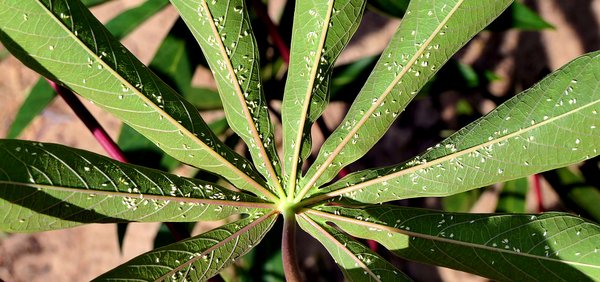- Share this article
- Subscribe to our newsletter
Decoding genome and diversity of whitefly vector behind cassava diseases
To develop the genome map of the African whitefly, an international research team drawn from the International Institute of Tropical Agriculture (IITA), Ibadan/Nigeria, with partners at Cornell University, Ithaca/USA and the United States Department of Agriculture (USDA), collected cassava whiteflies from a single field in Chato, north-western Tanzania, a region characterised by a super-abundance of whiteflies on cassava and severe CMD and CBSD epidemics. These were confirmed as sub-Saharan Africa-East and Central Africa (SSA-ECA) using single nucleotide polymorphism (SNP)-genotyping.
The Bemisia tabaci, a global pest and vector of damaging plant viruses in agriculturally important crops, is a complex species comprising many morphologically indistinguishable species. Cassava B. tabaci, confined to sub-Saharan Africa, specialise on cassava, and are rarely found on other host plants.
Two other important B. tabaci species, Middle East-Minor Asia 1 (MEAM1) and Mediterranean genetic group (MED), colonise many host plants and have spread as invasive populations throughout the tropical regions of the world. They were the first B. tabaci species to have their whole genomes sequenced. This adds African cassava B. tabaci to this list, making it the third whole genome to be sequenced for this complex species.
The draft genome assembled from Illumina short reads has 78 per cent of core genes fully covered, which is comparable to figures for the other two B. tabaci genomes. It has a total size of 513.7 Mb and contains 15,084 predicted protein-coding genes. The SSA-ECA genome has fewer detoxification genes (509) than those of MEAM1 (667) and MED (680). This may be because SSA-ECA specialises on cassava and is not under pressure from insecticides, whereas the polyphagous MEAM1 and MED are under extreme pressure to evolve resistance due to heavy use of insecticides on their preferred annual crops.
The findings of this paper have been published in the paper “Genome of the African cassava whitefly Bemisia tabaci and distribution and genetic diversity of cassava-colonizing whiteflies in Africa”, with a draft published in the insect Biochem journal.
Major step forward to understand the evolution of the cassava B. tabaci
“This is a major step forward for whitefly research in Africa. The availability of the SSA-ECA genome resource presents important new opportunities for further research to understand the evolution of cassava B. tabaci,” says IITA Senior Plant Health Specialist James Legg. “It will be particularly interesting to unravel how these whiteflies adapted to cassava, a crop that cannot be colonised by the other types of B. tabaci.”.
Legg adds that understanding the mechanisms, which allow these whiteflies to utilise cassava, will help in the design and development of novel control strategies that could involve the deployment of products that disrupt these mechanisms.
Another area of focus will be to understand the mechanisms responsible for virus acquisition and transmission. Disrupting these could reduce or eliminate virus transmission in cassava. Gene sequences obtained from the genome may also allow for the development of high affinity insecticides that target specific pathways in the whitefly, which would make them more environmentally friendly and less harmful to non-target insects/organisms.
(IITA/wi)
More information:
Reference:
Wenbo Chen, Everlyne N. Wosula, et al.(2109). Genome of the African cassava whitefly Bemisia tabaci and distribution and genetic diversity of cassava-colonizing whiteflies in Africa. In: Insect Biochemistry and Molecular Biology





Add a comment
Be the First to Comment